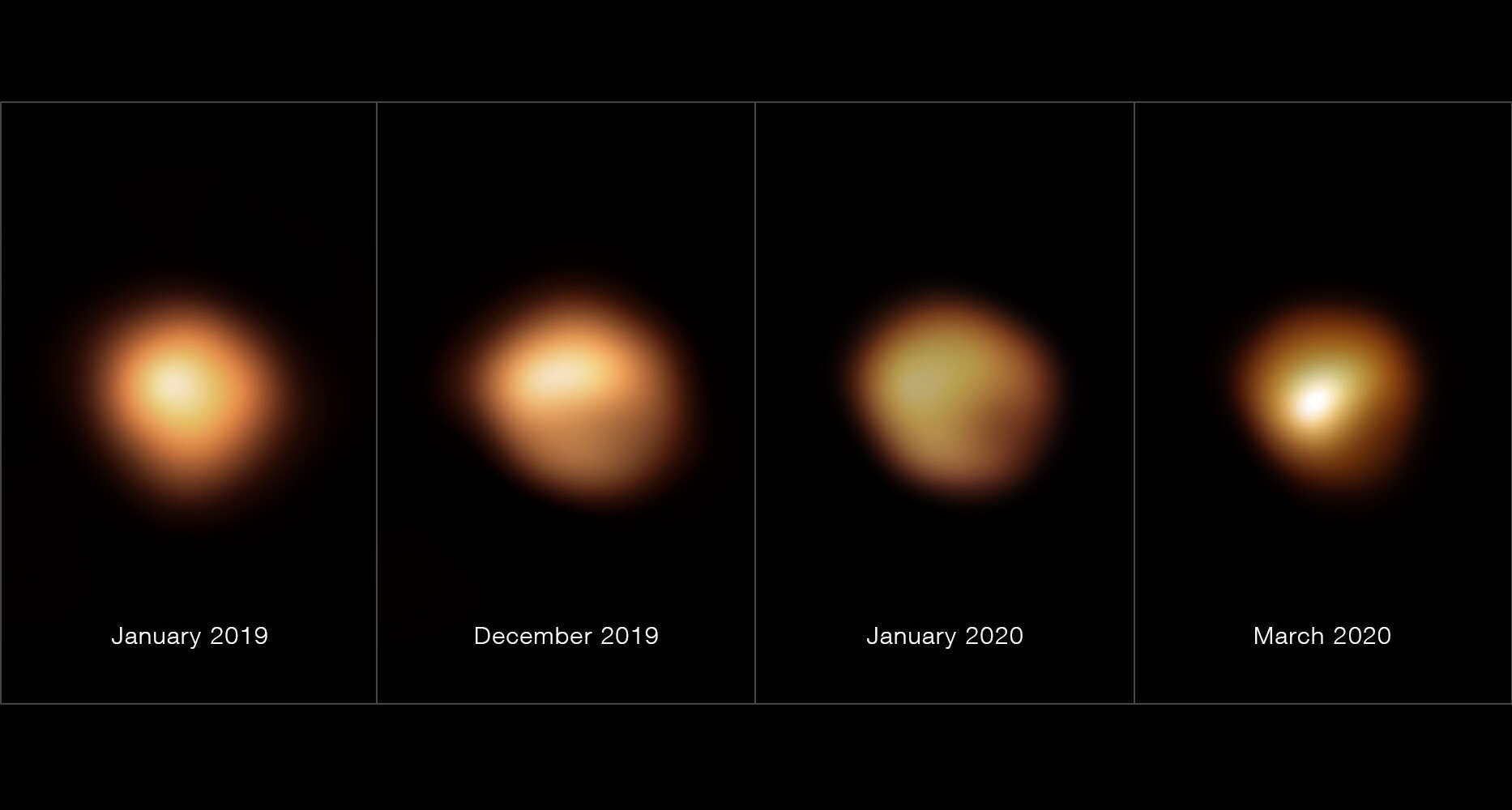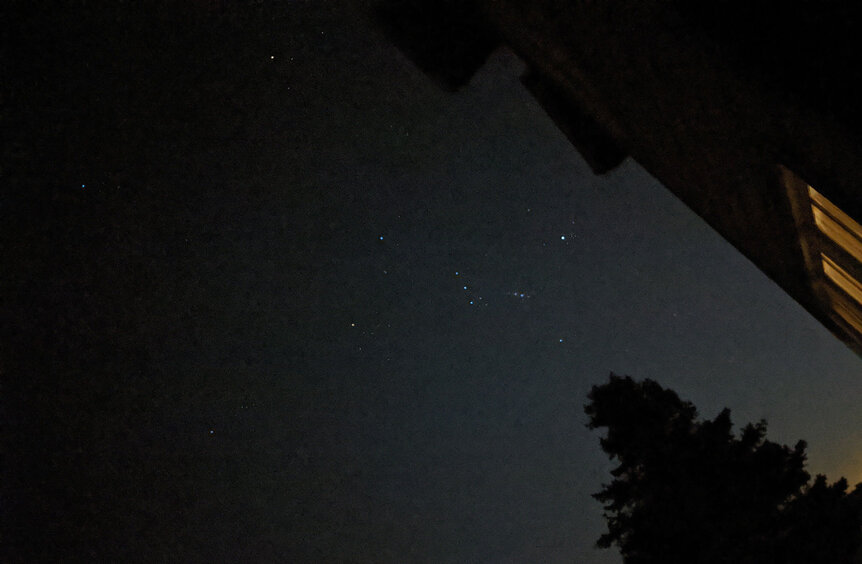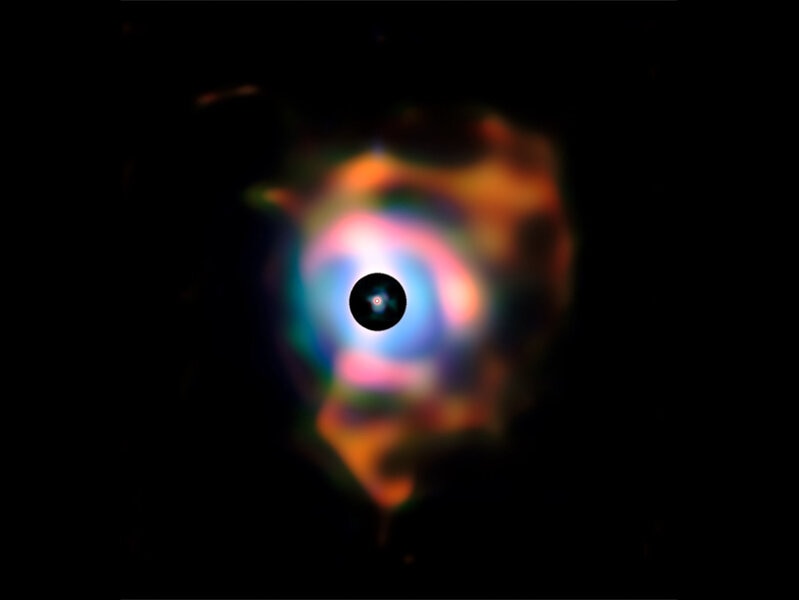Create a free profile to get unlimited access to exclusive videos, sweepstakes, and more!
We may finally know why Betelgeuse dimmed so much. Bonus: No supernova. Yet.

In late 2019 and early 2020 the star Betelgeuse started behaving badly. Normally one of the very brightest stars in the sky, it dimmed drastically, and for a few weeks dropped in brightness to less than a quarter its normal luster.
Then, just as suddenly, it began to brighten again. While it took a second, far smaller dip in June/July of 2020, it is now back to its usual ruddy glow marking the left armpit of Orion*.
Because it's such a showy star, and easily observable all over the planet — not to mention a popular movie based on the name, as well as the small fact that one day (though not any time soon) Betelgeuse will explode as a supernova and be way brighter than Venus in our sky — people took notice. Especially astronomers, of course, who came up with a lot of ideas for why the star faded so rapidly. Starspots, gas and dust clouds, a temperature drop, and other hypotheses were put forward with varying degrees of success, but a paper just published combines two of them to explain the weird behavior: The star ejected a cloud of gas, and then a temperature drop caused dust to condense in the cloud, blocking the star's surface from our view.
This conclusion is based on a series of jaw-dropping images taken of Betelgeuse using the SPHERE and GRAVITY cameras hooked up to the monster 8.2-meter Very Large Telescope in Chile. These cameras can be used to produce images with phenomenal resolution, enough to actually see the shape of the star! Usually stars are too small and far way to resolve their surfaces, but Betelgeuse is both close (something like 530 light years away) and enormous (a billion kilometers across), making it possible to map its surface in detail.
The images were taken in January 2019, December 2019, January 2020, and March 2020. The first two not only showed the star dimming but that the fading was restricted to the southern hemisphere, which dropped in brightness to only about 1/10th that of the northern hemisphere. The latter two images show the surface of Betelgeuse continued to change in structure right up until it started to brighten again in April 2020.
The astronomers used the images to model the star's behavior in two ways. One was to look at its temperature, which is usually about 3,400° C (6,200° F). They find that the star would have dropped to about 3,100°C to explain their first two images, and another 200° by March 2020.
The brightness of a star is directly related to its temperature, but this drop isn't nearly enough to explain why Betelgeuse seemed to fall off a cliff. For that, they looked to dust.
Betelgeuse is a red supergiant, a massive star nearing the end of its life. Such stars undergo a lot of physical processes that can lead to them ejecting huge clouds of gas that are polluted with molecules like silica (usually magnesium or iron attached to a molecule of silicon tetroxide) — what astronomers call dust. After erupting from the star the cloud travels away but remains heated by the star.
The astronomers modeled this process with Betelgeuse, and found that a cloud about 600 million to a billion kilometers across — big enough to stretch from the Sun to Saturn! — and roughly 2 billion kilometers from the star would do the trick. But not alone: It needed help.
What they concluded is that the cloud already existed at that distance, but was mostly gas. When the star cooled, however, the cloud also dropped in temperature, enough that the silicates in it condensed, forming dusty clumps. These are opaque to visible light (the kind we see), and that is what caused the catastrophic dimming of the star. Then, eventually, the star heated up again, the dust molecules were destroyed, and Betelgeuse brightened once again.
This does explain a lot, and fits what we know. For example, huge clouds of dust were previously found surrounding the star out to great distances, so we know something like this can exist. And other studies showed the star cooled a bit during this time as well. Putting the two together, dust condensing explains things pretty well.
How massive was this cloud? They find the best fit to the data is a cloud with very roughly a billionth of the mass of the Sun in dust, and about 200 times that much gas. That may not sound like much, but it's equivalent to roughly six times the mass of the Moon. That's a big belch.
It's important to note that all these shenanigans Betelgeuse wrought probably have nothing to do with any imminent demise. It will explode, of that there's no doubt, but it's unlikely to go supernova on us for a hundred thousand years or so. Massive stars explode when their cores run out of nuclear fuel, but what happens buried a half billion kilometers under the surface doesn't affect the outer layers strongly on such short timescales. Also, stars about to blow generally lose a lot more mass than Betelgeuse currently ejects, so again this indicates it's holding its own for now.
So is all this the last word on The Great Dimming? Somehow I doubt it. There have been a lot of arguments about what happened, and even if this general scenario is correct there are a lot of details to work out. Why did Betelgeuse's temperature drop? By how much, exactly (the measurements in the model are only ±50°, so pretty rough)? What caused the dust cloud to be erupted out in the first place?
And, of course: Will this happen again?
For that, we'll have to let Betelgeuse let us know. And if it does, we'll be watching.
*The name Betelgeuse comes from a corruption of the Arabic phrase "armpit of the giant/Orion," so there you go.





























